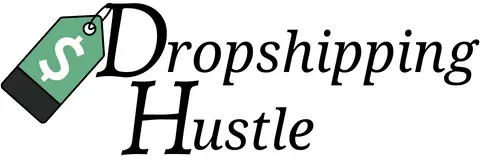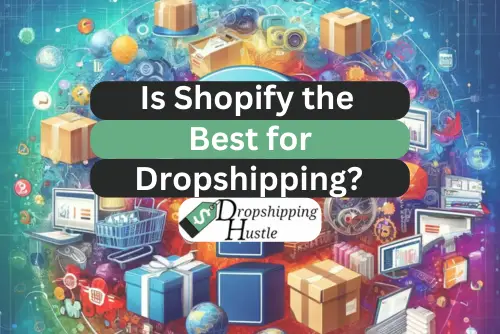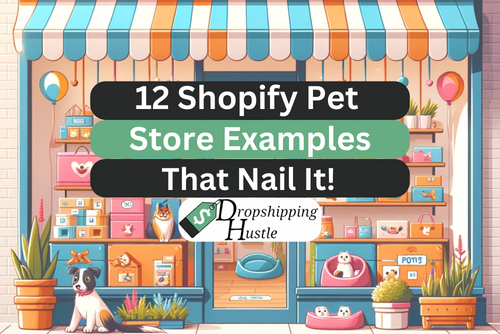One-product stores are clearly increasing in popularity, check Google trends over the past 5 years if you don’t believe me. There’s a reason they are currently trending, they really do work and can make a lot of money!
If you’ve heard one-product stores are the easiest way to make money online you’re probably ready to jump in. However, one-product stores are not without their drawbacks. It’s important to have a realistic perspective before building your own one-product store.
Whilst there are always pros and cons to everything, below are the most important advantages and disadvantages of a one-product store I believe a beginner should be aware of.
Pros of a One-Product Store
1. Products Perceived Value is Increased
The profit margin with a single product can be far higher than if you sold the identical product in a store filled with other products. The reason for this is the perceived value of the product is far higher.
With a one-product store, your product is the star of the show. You can afford to take the time to create unique and high-quality content that adds to your product over perception. For example;
- Take unique photos of your product or pay a professional photographer to create high-quality professional product images.
- Write persuasive product descriptions that list all the benefits and answer the customer’s questions effectively.
- Design a professional and trustworthy store that is themed around your product and resonates with your main customer base.
A store focused on a single item with compelling content increases the value of your product substantially and allows you to charge premium prices.
2. Faster and Easier to Build
Once you’ve learned the basics of Shopify, you can build a professional one-product store in a few hours. Especially if you’re using a Shopify theme such as Booster which already has preset stores you can use as templates.
Although you do need to take more time creating content around your product, it’s only applicable to a single product. It can be a time-consuming task if you’re creating unique content for 20 or even 200 products.
It can be very confusing organizing categories and sub-categories and adding multiple variants and accessories for each of those products. This is a much simpler and faster process with a one-product store.
The ease and speed of creating a one-product store business allows fast repeated attempts until you do succeed. If your store is going to fail, you want it to fail fast.
3. Semi-Passive Stream of Income
Running a general and niche store stocking hundreds or thousands of products can become a full-time job, not only with the setup of the store but the ongoing work it requires. From updating product information to fulfilling orders and customer service.
Most online general stores can become a game of product cycling the latest trending items until one trend ends and the next begins. Most stores will require ongoing testing and optimizing of various products depending on the customer’s needs.
Once a one-product store is initially optimized and established, they are a far more passive stream of income compared with other e-commerce stores.
The reason this is so powerful is it allows you to open and run multiple one-product stores at the same time. Once you understand the necessary steps of building a successful one-product store, the process can be easily replicated.
4. Bulk Purchasing is Easier
Whether you’re sourcing stock from a domestic supplier or from China, the ability to order in bulk will have several benefits and lower cost price will be the most important.
Depending on your business, it’s often not viable to order all your stock in bulk. From storing and managing inventory to shipping, it can become complicated and financially risky.
However, with a one-product store, you are bulk buying a product a single item that has proven its potential which has removed much of the risk. Bulk buying one product is feasible, bulk buying 30 products is a large gamble.
If you’re dropshipping, transitioning into buying bulk orders at wholesale rates should be your priority. This is not possible if you’re dropshipping multiple products.
5. SEO for Free Traffic
It’s much easier to rank in Google’s SERPs (Search engine results page) with a one-product store as opposed to selling the same item in a multiple-product store.
A single-product store named after a specific item with all the images, content and keywords related to a specific search term someone types into Google is far more likely to be found by a user.
This is one of the most effective methods of driving free organic traffic to a store and creating a long-term and sustainable business.
6. Optimized Conversions Rate
The typical conversion rate on a one-product store will be higher than other e-commerce stores. There are a few reasons for this.
- Visitors to a one-product store are there because they are interested in the product, not to shop around and check out your other products
- The store is fully optimized for conversions. The images, descriptions, store design, offers, apps, and ads should be exactly what the customer wants.
- Every question or objection a customer has should be answered and addressed within the store to give them no excuse or reason why they should not buy.
- One-product stores should be branded with a unique product name. This means if potential customers try to price check the identical item online they won’t find it elsewhere and will be forced to buy from you.
7. You Only Need to Work with a Single One Supplier
Partnering with multiple suppliers and sourcing inventory from several locations can cause all kinds of problems. When you’re selling a single product, you should only need to deal with a single supplier which has several benefits.
- You have the opportunity to build a relationship with the supplier which also brings many advantages.
- The larger and more frequent your order from the same supplier provides you more leverage to negotiate better terms including lower product cost.
- The product quality is more likely to remain consistently high quality and reduces suppliers changing to more inferior products and materials without notifying you.
- All your shipping is done from one location which can make it easier to manage and reduce costs.
- You can work out deals with the supplier to give you exclusive rights to your product to not supply any other merchants with your product (very important).
- For some more pros, I have an article on the 10 advantages of selling a single product.
For some of my related articles on one-product stores:
Best one-product Shopify store theme
One vs multiple product stores
Cons of a One-Product Store
1. The Failure Rate is High Initially
There is no accurate way of measuring the failure of one-product stores of one-product stores, but in my experience, I believe it’s high. There are several factors required for a one-product store to succeed and if you don’t get them right your store will fail. Whilst not everything has to be perfect, there are a few necessary fundamentals that you will fail without.
- Your target audience needs to love your product
- The ad platform you use and the ads you create need to resonate with your customer base
- Your customer has to trust your website
- The product offer has to compel the customer to buy
Most one-product stores fail in the early stages because the fundamentals are not complete. Consumers buy based on logic, building a trustworthy store with a desirable product and an enticing offer is a logical reason to make a purchase. Focus on this and your chance of success will be greatly increased.
2. Smaller Target Audience
Obviously, if you have a one-product store selling a unique car rooftop tent, your potential buyers will be smaller than if you had a niche store selling all outdoor products.
Whilst a smaller audience size to sell to is a con because you have fewer potential customers, it can also be a pro as you can create a specific store type targeted towards a specific group of people.
It also really depends on the country you’re selling to. Even really unique products with smaller audiences can be extremely profitable if you’re selling in the US as opposed to New Zealand for example.
3. Average Order Value is Lower
Average order value is typically lower with a one-product store simply because you have fewer customers buying multiple products. For example, if a mom is looking to buy a new baby product from a store, there is a high chance she will browse at the other products and end up purchasing far more than she intended.
Whilst you can still increase your AOV with additional accessories, variants and related products, on average it will still be lower than most multiple-product stores.
4. Fewer Recurring Sales
Once you’ve acquired a customer to your store, whether that is through free or paid methods, you want to maximize your potential earnings. Repeat business and recurring sales is a big part of that as you don’t have to pay for returning customers.
Depending on the type of product you sell, it can be more difficult to generate repeat business with a single product store. This also makes email marketing far less effective which is a big part of any e-commerce business.
Some one-product stores have managed to overcome this and provide create customer lifetime value (CLV). For example, Blendjet sells smoothie packs with their portable blenders and Litter Robot sells cat litter with their robot litter trays which can recurring sales for years to come.
5. No Backup Products
Your store can be perfectly designed, your ads can be compelling, and your offer can be irresistible but if your product is not desirable then it’s all for nothing.
Whilst not every component of a one-product store needs to be perfect initially to start making sales, the product needs to be right. The store’s success is completely dependent on the product. There are no backup products. Your customer has to love your product.
With most e-commerce stores selling multiple products, if 90% of the products don’t sell but 10% do, then you can still be very profitable.
If you have never created a one-product store, it can be difficult to know exactly what makes the perfect product, often it’s not what many people expect.
I have several articles that should help you out if you need some assistance. I suggest you read my articles on the best one-product live store examples and How to choose the perfect product for a single-product store.
Summary
So what’s all this mean? Should you actually create your own one-product store business or have I just confused you more?
There are disadvantages and advantages to everything in life, and this applies to one-product stores. In my opinion, the pros outweigh the cons when it comes to selling a single product on a Shopify store.
The fact that you can create a complete one-product store fast and affordably is a huge pro. It means failing is not a huge loss and whatever you learn can be taken into your next attempt.






Leave a Reply